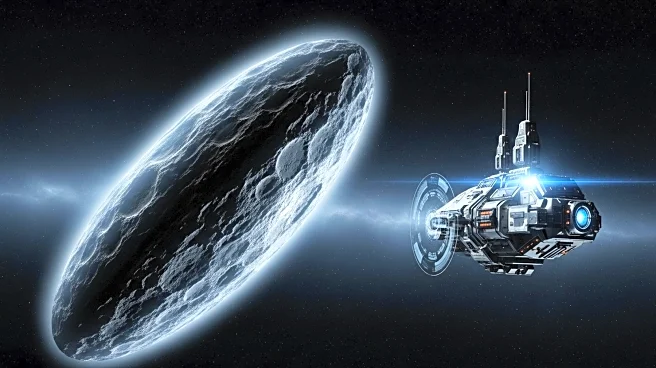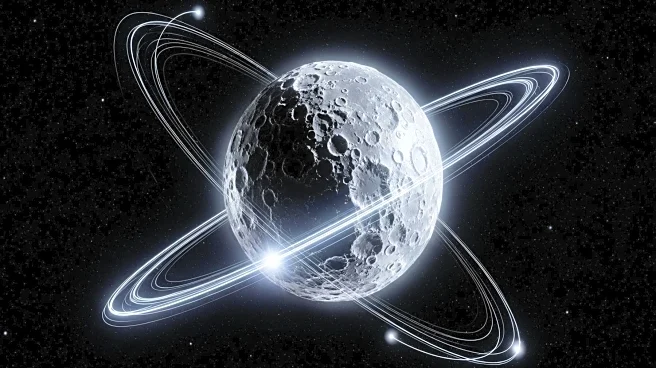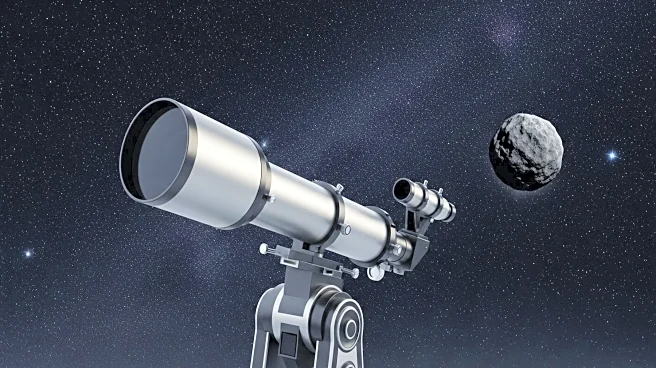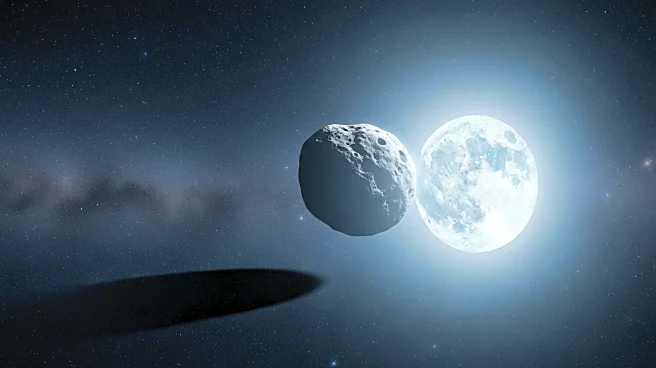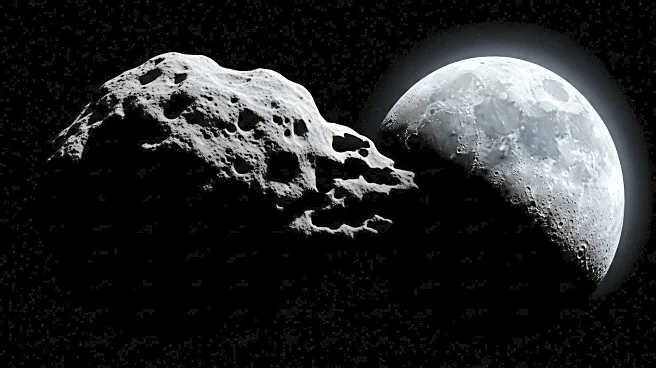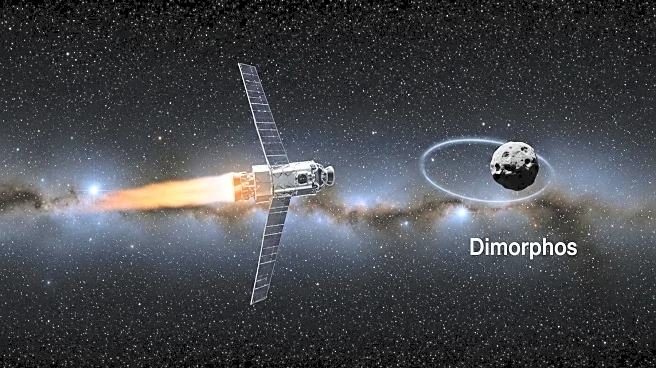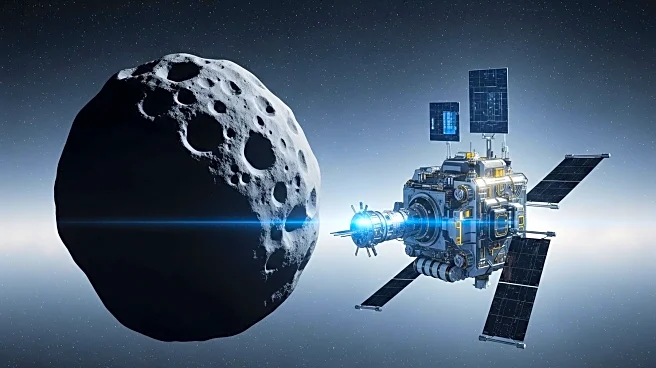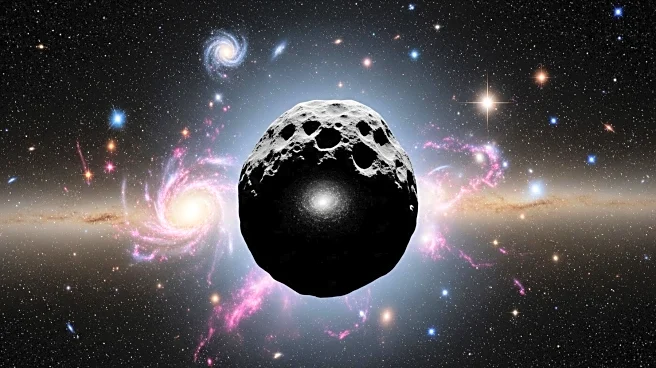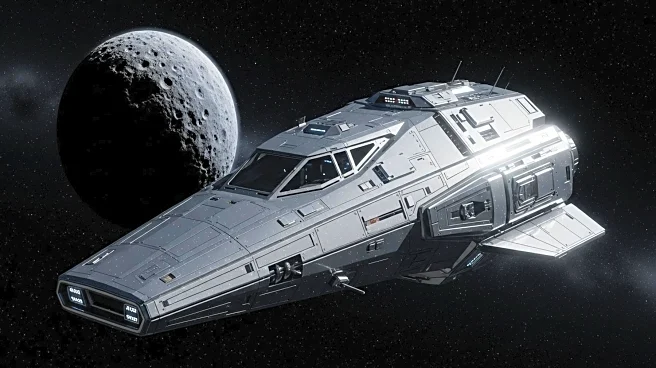What's Happening?
NASA's Double Asteroid Redirection Test (DART) mission, which aimed to alter the orbit of the asteroid Dimorphos, has resulted in unexpected changes. The mission involved crashing a nearly-600-kilogram satellite into Dimorphos, which orbits a larger asteroid named Didymos. Initially, the impact reduced Dimorphos's orbital period by about 30 minutes. However, subsequent observations revealed that the orbit continued to shrink by an additional 30 seconds over the following month. Researchers initially hypothesized that the ejection of rocks from the impact might be causing the orbit to change, but calculations by Harrison Agrusa and Camille Chatenet at the Côte d’Azur University suggest that Dimorphos lacks the mass and strength to eject debris effectively. Agrusa proposes that the impact may have caused Dimorphos to spin, leading to friction and heat generation from rocks and boulders sliding on its surface, which could account for the continued reduction in its orbit.
Why It's Important?
The findings from the DART mission are significant as they highlight the complexities involved in predicting asteroid behavior following an impact. Understanding these dynamics is crucial for future asteroid deflection strategies, especially those aimed at preventing potential Earth impacts. While the current observations pertain to a binary asteroid system, which is relatively rare, the insights gained could inform approaches to single asteroids that pose a threat to Earth. The unexpected orbital changes underscore the need for comprehensive models to anticipate the outcomes of asteroid deflection missions, which are vital for planetary defense.
What's Next?
Further research is needed to explore the mechanisms behind the orbital changes observed in Dimorphos. Scientists may conduct additional simulations and studies to better understand the impact-induced dynamics and their implications for asteroid deflection strategies. The insights gained could lead to improved models for predicting asteroid behavior, enhancing the effectiveness of future missions aimed at safeguarding Earth from potential asteroid threats.
Beyond the Headlines
The DART mission's unexpected results may prompt a reevaluation of current asteroid deflection models, considering factors such as spin-induced friction and heat generation. These findings could influence the design and execution of future planetary defense missions, ensuring that they account for complex post-impact dynamics. Additionally, the study highlights the importance of international collaboration in space research, as scientists from various institutions work together to unravel the mysteries of asteroid behavior.

